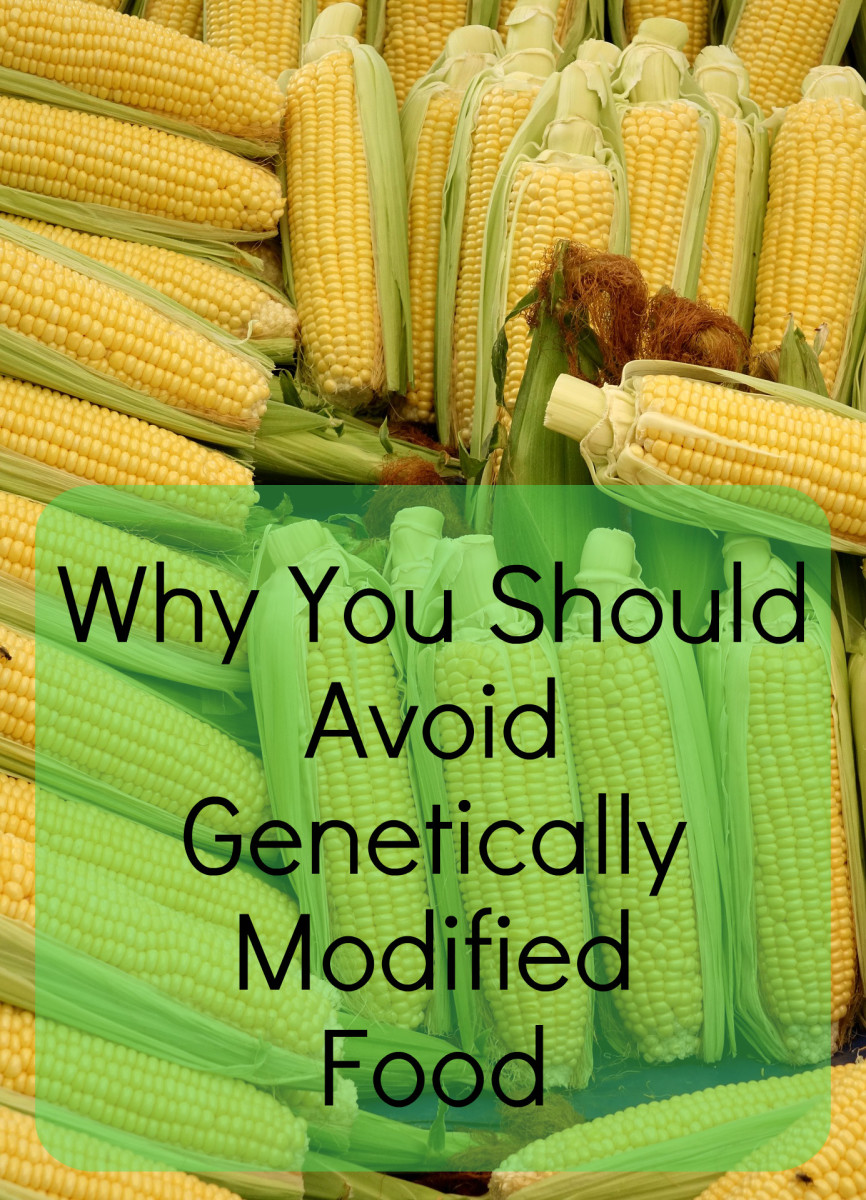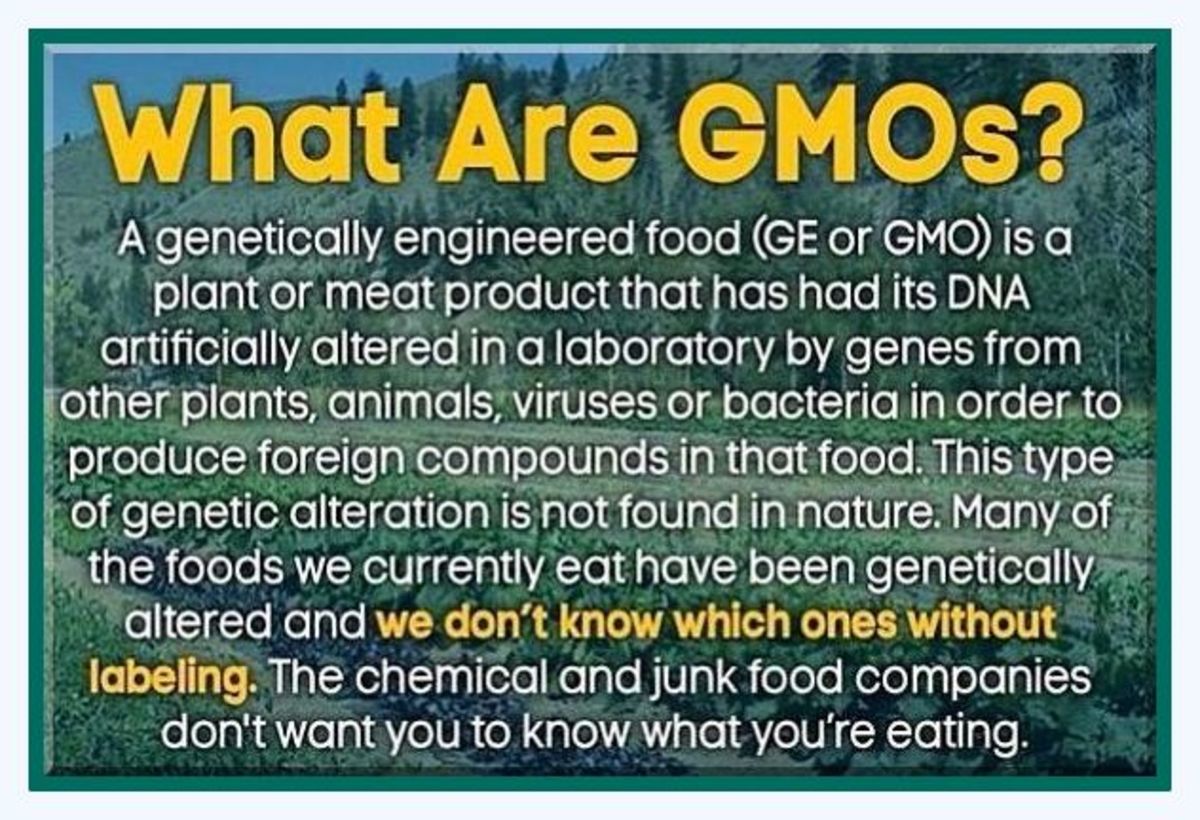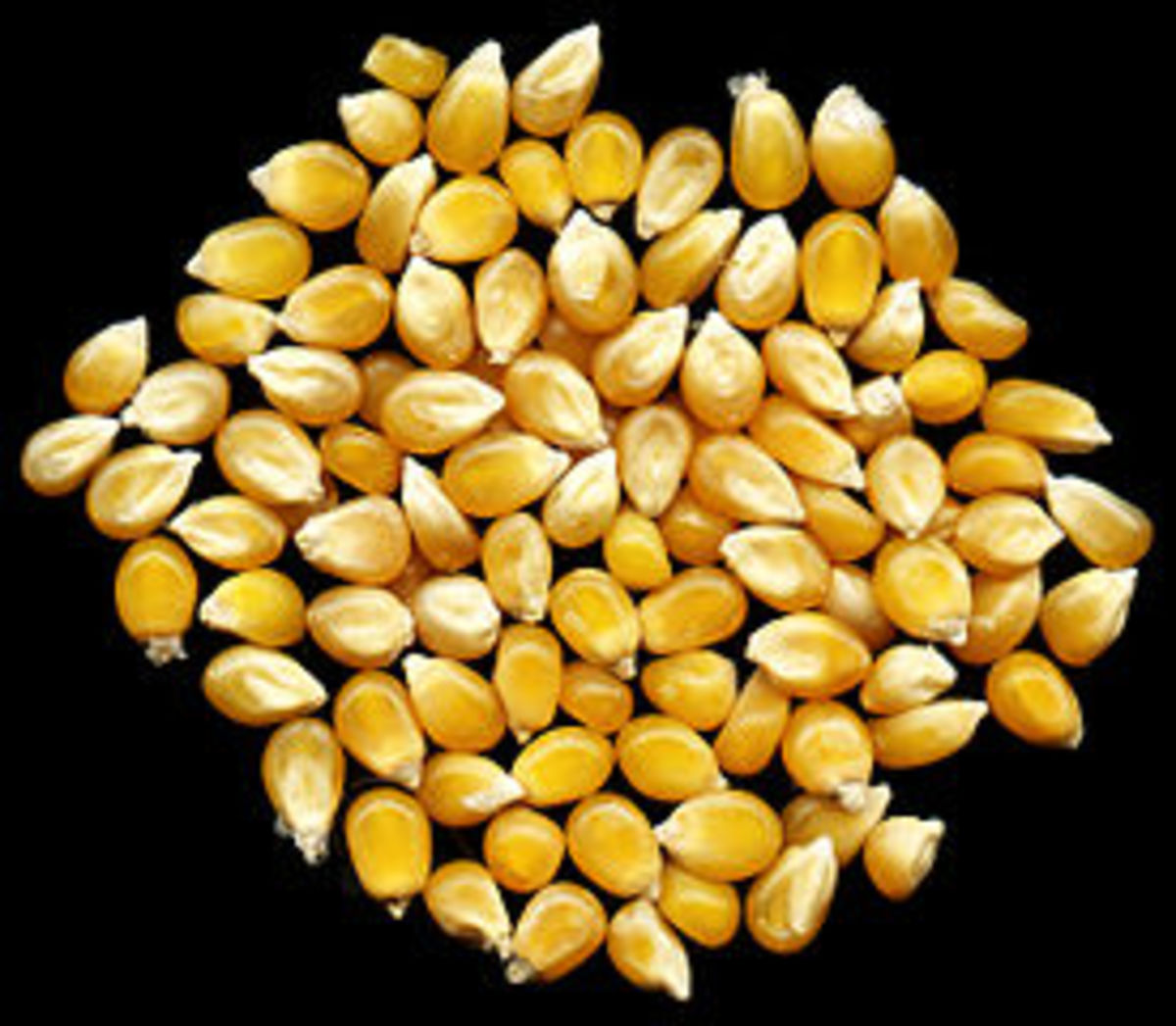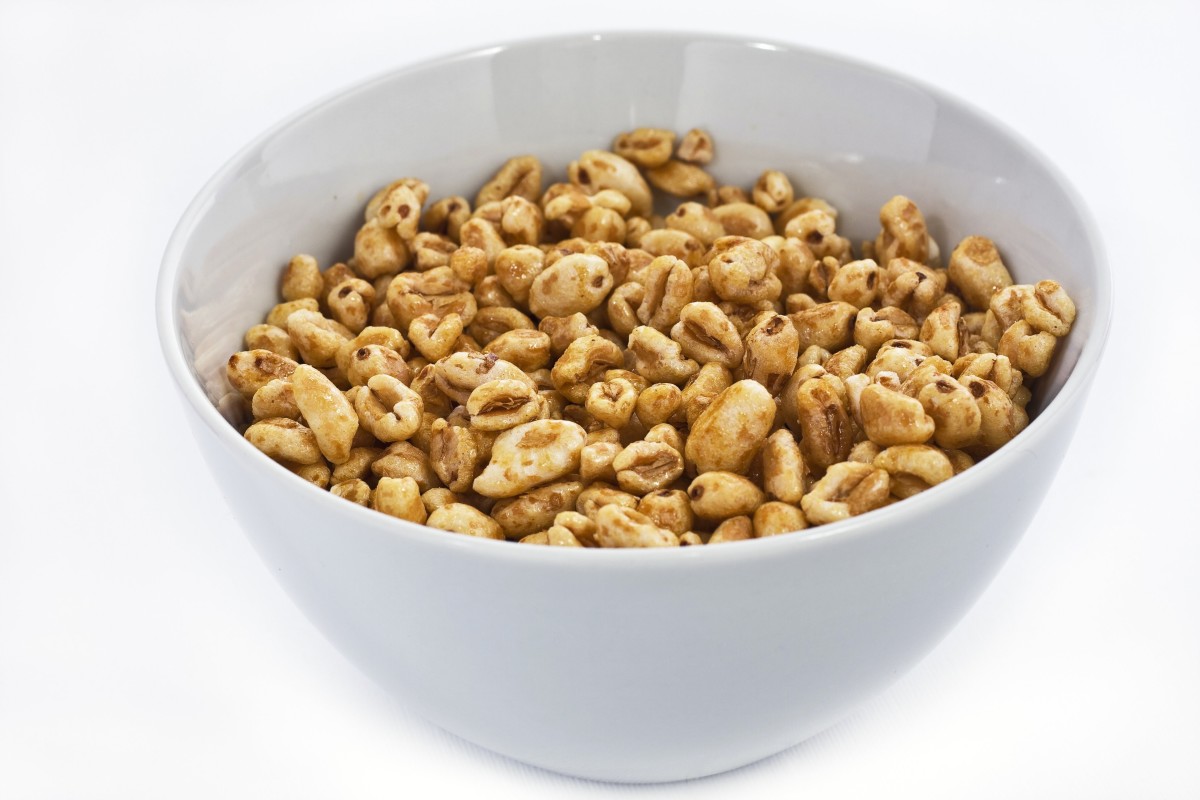Vegetables That Have Been Genetically Modified GMOs
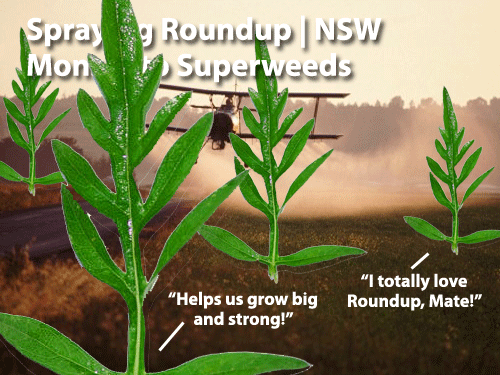
Genetically modified food has never been proven safe for people and animals to consume.
Healthy crops consists of good seed, soil, sunshine and water to reap a sustainable harvest. Beneficial insects pollinate the plants and are also predators of unwanted insects that damage them. Weeds sprout in the cultivated soil growing alongside the plants and can hinder their growth.
Pesticide helps keep invasive bugs from destroying 25% of the crops. Farmers have to spray millions of pounds of pesticide and herbicide every season. The price for the products can be expensive depending on weather conditions. An entire crop can be taken out in two or three days by certain pests and molds which is referred to as a blight.
To genetically modify an organism is to transfer one or more genes (genetic dna) into a plant's genome, transgenic. There are a number of various kinds of vectors used as a vehicle in molecular biology to transfer genetic material that contain several other genes.
GMO Pesticide and Herbicide Resistant Crops
Herbicide-tolerant (Ht) and Bt-transgenic crops now grown in the U.S. account for about one in every two acres of cropland. The percentage of soybean acreage is 95% transgenic and over 85% of corn. Out of all the acreage growing cotton, 90% is genetically modified (GMO).
Herbicide is sprayed to keep weeds from using the vitamins and minerals from the soil. Some weeds are so tall and invasive they interfere with harvesting machinery. A research study from September 2012 showed herbicide use on gmo herbicide resistant crops is on the rise. Scientists have analyzed the data and found very different conclusions from what the gmo seed companies claim about their product.
Over-reliance on glyphosate herbicide has led to the development of resistance in weeds causing a steady increase in herbicide use. Farmers are also having to add new herbicides on an alternate schedule along with the herbicide that goes with the gmo seed.
Transgenic corn is grown not only for ethanol used for fuel, but also for livestock feed and human consumption. Only about 5% of soy and 15 to 20% of corn crops in the U.S. are still grown by either conventional or organic methods.
Pesticide use declined two percent from 1996 to 2001 which amounted to 31 million pounds. Insects migrated to other crops and have also developed a resistance to the Bt toxin in the gmo corn, soy and cotton. Bt toxin inside the gmo plants is intended for the purpose of replacing the need to spray pesticide.
Pesticide and herbicide use is on the rise with gmo crops.
Insects are prone to acclimating themselves to their surroundings. They have developed a resistance to the Bt toxin causing the need to increase the use of pesticides. Not only does every cell in the Bt plants have pesticide, they are subjected to chemical sprays as well.
Herbicide resistant crops were effective in the control over weeds during the first few years of growing gmo crops, however, farmers have been having to increase herbicide application rates, especially the glyphosate that goes with the seed purchase. There is also the need to alternate with new herbicides and to spray more often.
There is now a steady rise in the volume of both insecticide and herbicide applications used on gmo corn, soy and cotton crops.
Herbicide Results
- 1999 - 1.5 million pounds
- 2003 - 18 million pounds
- 2009 - 79 million pounds
- 2011 - about 90 million more pounds of herbicide was applied compared to the amount that would have been sprayed on the conventional, non-gmo crops of corn, soy and cotton.
Approximately 24% in total of additional glyphosate and other herbicides were sprayed on gmo corn, soybean and cotton in 2011.
Super Weeds
Two dozen weeds have developed a resistance to the herbicide that contains glyphosate; the herbicide used in conjunction with herbicide-tolerant gmo crops. Maintaining control over the newly developed resistant weeds have inflated herbicide use by 25% to 50%. Weed control has also inflated the costs for farmers having to buy the additional pounds of herbicide in order to obtain a profitable harvest.
Pesticide Results
All of the gmo corn, soybean and cotton received 20% more pesticide in 2011 compared to the conventionally grown varieties of the same crops. The use of pesticide and herbicide has been a primary concern for farmers for a number of years. Not only do they contribute to adverse health effects on the environment and consumers, they are also a major expense.
Corn Root worm Bt Resistance
It is claimed by the biotech food industry that genetically modified corn has built-in pesticide in each plant protecting them from root worm damage. The crops, however, are becoming damaged because the root worm has been developing a resistance to the built-in pesticide.
A large sales feature of gmo seed as promoted to farmers is the significant amount of savings from the reduced amount of pesticide needed compared to growing conventional corn. Another positive feature promoted by gmo seed companies is less pesticide spray, therefore, is released into environments as well.
Bt Toxin as a Pesticide Grown inside Plants
Since every cell of the plant contains Bt toxin, this idea must have been invented with a main purpose of marketing it to farmers. Not only would buying the gmo seed greatly lower their expenses, the need to spray would be greatly decreased making their gmo products environmentally friendly.
As it stands over the long run, however, gmo corn is not proving to be a money-saver for farmers and the the decrease in synthetic pesticide applications has contributed to the rise in pests that have never been effected by the Bt toxin.
Bugs that never had any effect on the crops before Bt, have multiplied. Pests considered as secondary have led to the rise of major scourges, particularly in Bt cotton-growing regions of India, Pakistan and China.
GMO pesticide-producing plants produce Bt toxins, a crystal protein naturally formed by the bacterium bacillus thuringiensis. The Bt in bacteria is removed by biotech engineers and transferred into the DNA of corn and cotton plants. When insects such as corn borers bite into the stalk, the toxin splits their stomach open.
Effects of Bt toxin on Beneficials
Bt toxin in each plant is also toxic to a variety of helpful insects, including natural pollinators and pest predators. Monarch butterflies, a chief pollinator in North America, occasionally feed on corn plants and are highly susceptible to Bt poisoning.
Research Studies on GMO Foods
A rare long-term gmo research study that fed gmo corn to mice showed the longer they consumed it, the fewer and smaller babies they had. These health disorders would not have shown up in normal industry-funded studies which last for only 90 days and rarely look at reproductive health.
After a well-known bio-chemist and nutritionist, Arpad Pusztai, published his observations in 1998 of damage to the intestines and immune systems of rats fed genetically modified potatoes, a media frenzy ensued and his funding was suspended. It was reported he had stated that it was very unfair to use citizens as guinea pigs. (The Guardian, London, 2008) Rowett Institute did not renew his yearly contract.
Genetically modified foods have not yet been proven safe, although the manufacturers and regulatory agencies, of whom have a vested financial interest, assert they are safe for human and animal consumption. To minimize health consequences, environmental pollution, and ecological imbalance, safety screening is needed on all gmo crops.
Although biotech food companies insist that gmo and conventionally grown crops have little biological difference, it is clear that most gmo crops fall short of the definition of substantial equivalence.
The Need for True Research Studies
Because of conflicts of interest, revolving doors and people with a vested interest getting appointed into policy-making positions to write regulations in their own favor, not enough research has been done to evaluate the environmental and health risks of transgenic crops. Most scientists agree such knowledge is crucial before biotechnological innovations are implemented rather than after the fact.
Other Agricultural Methods
Other growing methods are used that increase crop yields as effectively as the introduction of transgenic organisms. Other technologies more easily understood, less likely to form cycles of farmer debt and that produce substantial amounts to make extra provisions. Methods such as crop rotations, poly-cultures, cover crops, biological control, etc. implemented to effectively regulate the insect and weed populations.
The farmers growing herbicide-resistant gmo crops may not consider diversified cropping systems. Not diversifying the crops every two or three years is another hindrance to the development of sustainable agriculture.
Significant losses would occur if the transgenic crops were to go unprotected from the new stealth-like root worms. When pesticides have to be applied to crops that already contain hefty doses of pesticide, the economic and environmental advantages of root worm-protected gmo corn is quickly left in the dust.
When Haste Makes Waste
Rapid planting of gmo Bt crops reached 8.2 million hectares worldwide by the year 2000. Is it conceivable even to consider that stringent precautionary protocols had been compiled and distributed by not only the companies who own the patented seeds, but also biotech engineers and regulatory agencies?
The release of transgenic crop production should be based on the Polluter Pays Principle. To have this regulation in place would not only offer assurance that absolute liability for both personal and environmental harm is covered, it would also give biotech companies pause to assure their gmo seeds and products are safe before marketing, planting and consumption occurs on a wide scale.
Lizolivia
Resources:

